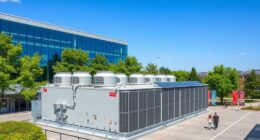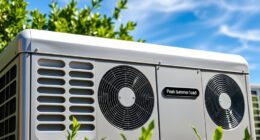Are you ready to discover the hidden power that is beneath our feet?
Join us as we explore the 13 essentials of harnessing Earth’s warmth for your business structures.
From the basics of geothermal heat pump technology to the future trends and innovations in this field, we’ll guide you through every step.
Let’s unlock the potential of geothermal energy together and create a sustainable future for our businesses.

Key Takeaways
- Geothermal heat pumps use the Earth’s constant temperature for efficient heating and cooling, resulting in cost savings and reduced energy expenses for businesses.
- Geothermal energy is a clean and renewable energy source that provides long-term cost stability and contributes to environmental sustainability by reducing carbon emissions.
- Geothermal systems are highly efficient, converting a larger percentage of input energy into usable heat or cooling, and they offer a reliable source of energy that is not dependent on weather conditions.
- Choosing the right geothermal system for a business involves considering factors such as building size and layout, climate conditions, energy consumption patterns, cost versus efficiency, maintenance requirements, and system longevity.
The Basics of Geothermal Heat Pump Technology
We will now explore the basics of geothermal heat pump technology. When it comes to harnessing the Earth’s warmth for our business structures, geothermal heat pumps are a game-changer. These innovative systems use the constant temperature of the ground to provide efficient heating and cooling. By tapping into this natural source of energy, we can reduce our environmental impact and save on energy costs.
Geothermal heat pumps work by circulating a fluid through underground pipes, absorbing heat from the ground during the winter and releasing it inside the building. In the summer, the process is reversed, with excess heat being extracted from the building and transferred back into the ground. This cycle allows for year-round comfort and energy efficiency.
One of the major advantages of geothermal heat pump technology is its reliability. Unlike traditional HVAC systems, geothermal systems aren’t exposed to the elements and aren’t affected by outdoor temperature fluctuations. This means consistent performance and fewer maintenance issues.
In addition to being reliable, geothermal heat pumps are also highly efficient. They can achieve a coefficient of performance (COP) of up to 4, meaning that for every unit of electricity used, four units of heat energy are produced. This level of efficiency translates into significant energy savings and a reduced carbon footprint.
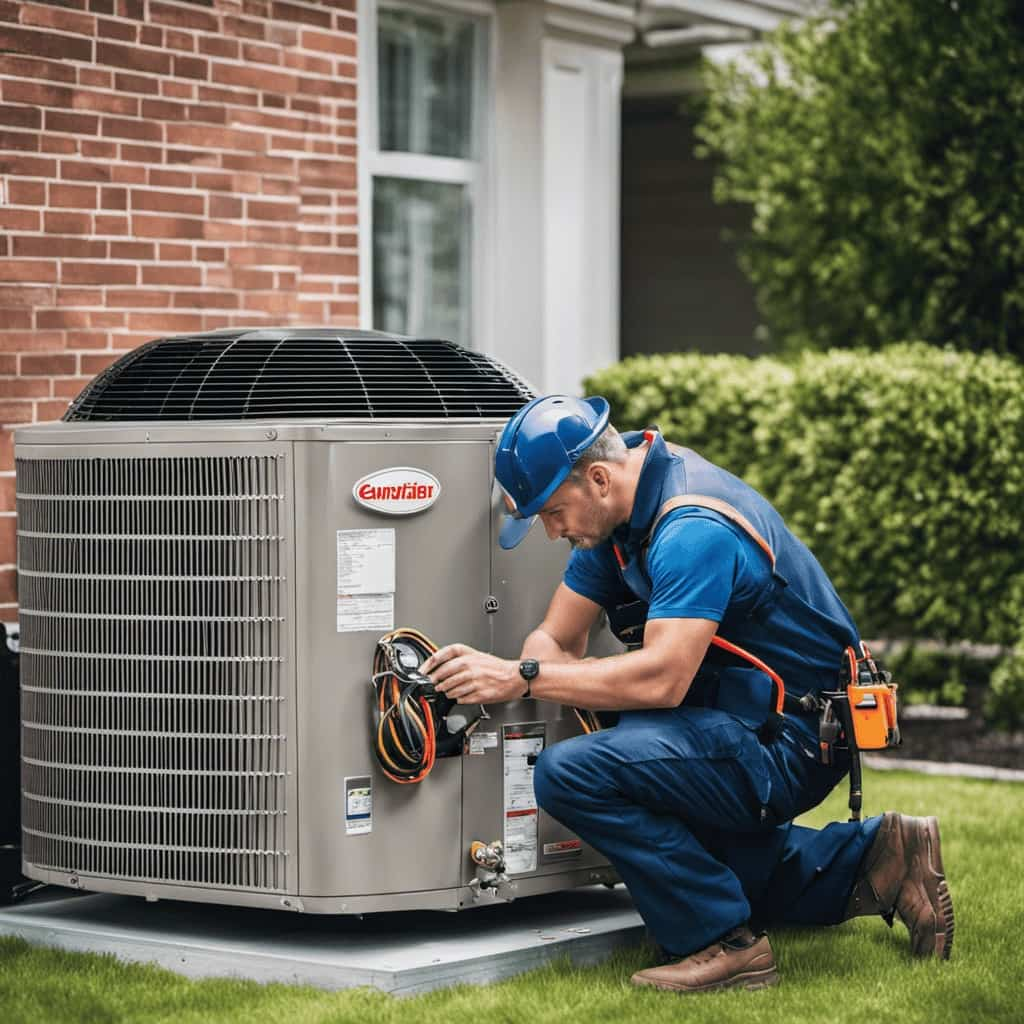
Furthermore, geothermal heat pump technology is versatile and can be used in a variety of settings. Whether you have a small office building or a large industrial complex, geothermal systems can be customized to meet your specific needs. They can also be integrated with other renewable energy sources, such as solar panels, to further enhance their efficiency and sustainability.
Understanding the Earth’s Natural Heat Source
While geothermal heat pumps rely on the Earth’s natural heat source, it’s important to understand how this heat is generated and accessed. Here are three key points to consider:
Heat Generation: The Earth’s natural heat source comes from its core, where temperatures can reach thousands of degrees Celsius. This heat is generated by the radioactive decay of elements like uranium, thorium, and potassium.
Heat Transfer: The heat from the Earth’s core is transferred to the surface through a process called conduction. The heat gradually moves through the layers of rock and soil until it reaches the surface, where it can be harnessed using geothermal heat pumps.

Heat Access: Geothermal heat pumps tap into this natural heat source by circulating a fluid, usually water or a mixture of water and antifreeze, through a series of underground pipes called loops. As the fluid travels through the loops, it absorbs heat from the ground and carries it into the building, providing heating in the winter and cooling in the summer.
Understanding the Earth’s natural heat source is essential for harnessing its warmth effectively and sustainably.
Benefits of Harnessing Geothermal Energy for Business Structures
When it comes to harnessing geothermal energy for business structures, there are two key benefits that stand out: cost savings potential and environmental sustainability.
By tapping into the natural heat source of the Earth, businesses can significantly reduce their energy costs and improve their bottom line.

Additionally, utilizing geothermal energy is a sustainable solution that helps reduce carbon emissions and minimizes the environmental impact of traditional energy sources.
Cost Savings Potential
Geothermal energy can provide significant cost savings for businesses by reducing energy expenses and increasing overall operational efficiency. Here are three ways that harnessing geothermal energy can benefit your business:
Lower energy expenses: Geothermal systems utilize the natural heat from the Earth, eliminating the need for traditional heating and cooling methods. This can result in substantial energy cost savings for businesses, especially in regions with high energy prices.
Increased operational efficiency: Geothermal systems are highly efficient, converting a larger percentage of the input energy into usable heat or cooling. By utilizing this renewable energy source, businesses can reduce their reliance on fossil fuels and improve their overall operational efficiency.
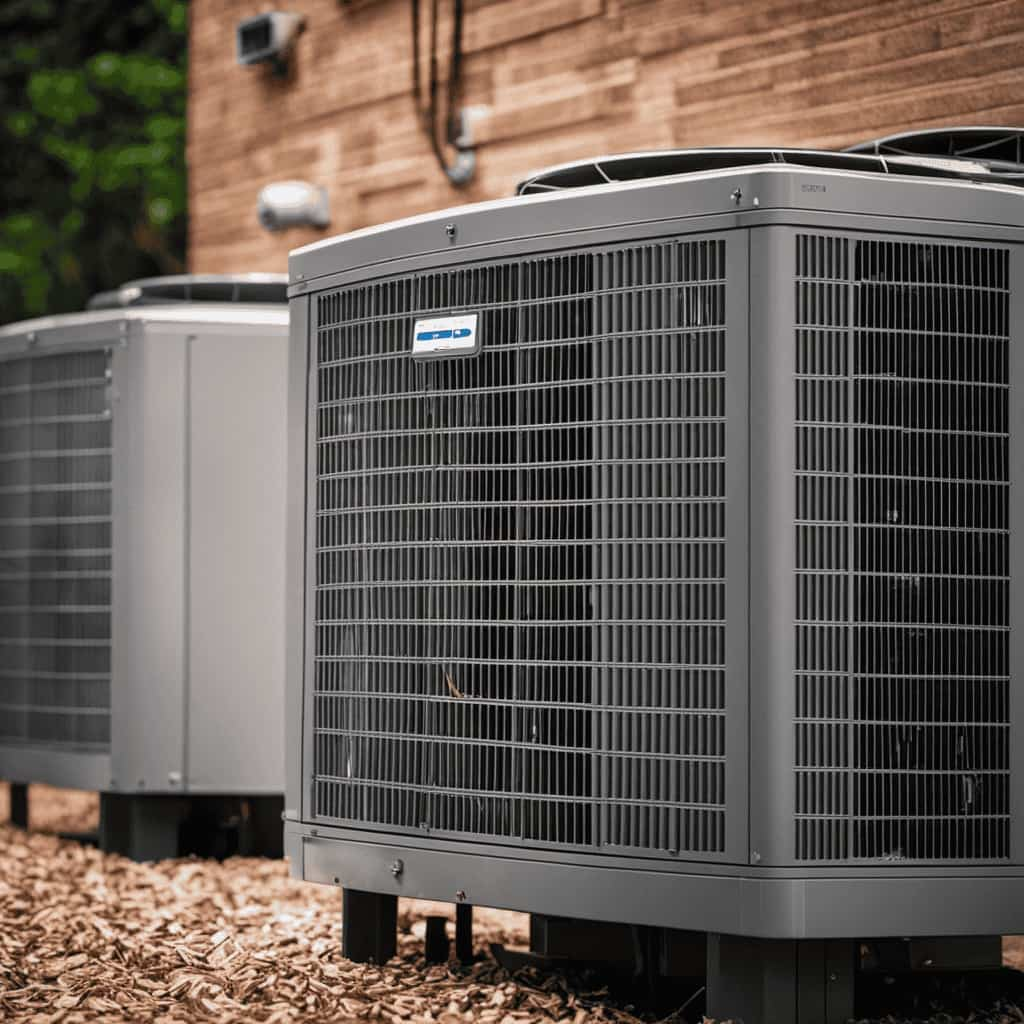
Long-term cost stability: Geothermal energy is a stable and reliable energy source. Unlike traditional energy sources that are subject to price fluctuations, geothermal systems provide businesses with a predictable and steady source of energy, allowing for better financial planning and budgeting.
Environmental Sustainability
Our business structures can achieve environmental sustainability by harnessing geothermal energy, which provides numerous benefits for the planet. Geothermal energy is a renewable energy source that utilizes the heat from the Earth to generate power and heat. By tapping into this natural resource, businesses can significantly reduce their carbon footprint and contribute to a cleaner and greener environment.
Harnessing geothermal energy offers several advantages for business structures. Firstly, it is a clean and sustainable energy source that produces virtually no greenhouse gas emissions. Secondly, it is a reliable source of energy that is not dependent on weather conditions, unlike solar or wind power. Lastly, geothermal energy can help businesses save on energy costs in the long run, as it requires minimal maintenance and has a low operational cost.
Here is a table illustrating the environmental benefits of harnessing geothermal energy for business structures:

| Benefits of Geothermal Energy for Business Structures |
|---|
| Clean and sustainable energy source |
| Minimal greenhouse gas emissions |
| Reliable and consistent energy supply |
| Potential for long-term cost savings |
How Geothermal Heat Pumps Work in Commercial Buildings
Let’s explore how geothermal heat pumps efficiently operate in commercial buildings.
Ground Loop System: Geothermal heat pumps utilize a ground loop system, which consists of a series of pipes buried underground. These pipes circulate a fluid, typically water or a mixture of water and antifreeze, to absorb heat from the earth.
Heat Transfer: The fluid in the ground loop system absorbs the earth’s natural heat and carries it to the heat pump located inside the building. The heat pump then extracts the heat from the fluid and transfers it to the building’s heating system.
Energy Efficiency: Geothermal heat pumps are highly energy efficient because they rely on the earth’s constant temperature, which remains relatively stable throughout the year. This eliminates the need for traditional heating and cooling methods, resulting in significant energy savings and reduced greenhouse gas emissions.
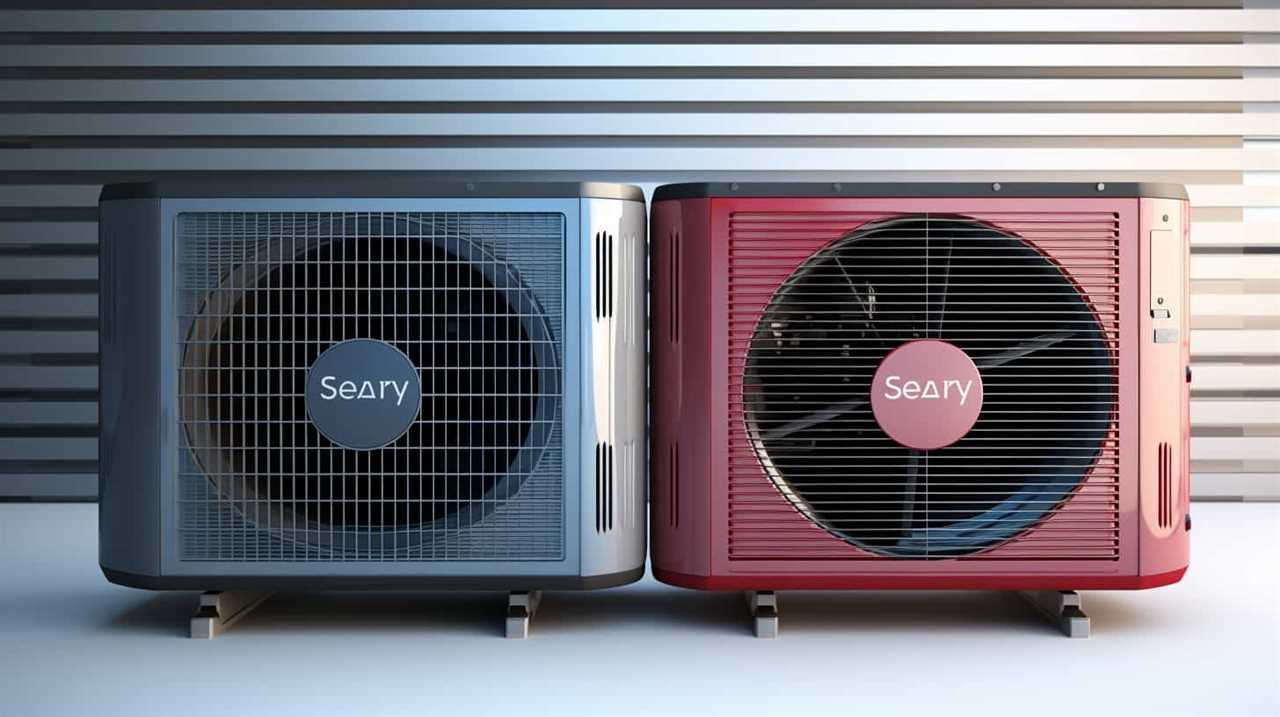
Choosing the Right Geothermal System for Your Business
When choosing the right geothermal system for our business, there are several key points to consider.
First, we need to think about the size of the system and ensure it’s suitable for our building’s heating and cooling needs.
Secondly, we must weigh the cost versus efficiency of different systems, taking into account long-term energy savings.
Lastly, we should factor in maintenance requirements and the longevity of the system to make an informed decision that aligns with our business goals.

System Size Considerations
We must carefully consider the size of the geothermal system that’s most suitable for our business. Selecting the right system size is crucial to ensure optimal performance and energy efficiency. Here are three key factors to consider when choosing the size of your geothermal system:
Building size and layout: The size of your business structure will determine the heating and cooling demands. Larger buildings may require a bigger geothermal system to effectively maintain comfortable indoor temperatures.
Climate conditions: The local climate plays a significant role in determining the size of the geothermal system needed. Areas with extreme temperature variations may require a larger system to handle the heating and cooling requirements.
Energy consumption patterns: Analyzing your business’s energy consumption patterns will help determine the appropriate size of the geothermal system. A thorough evaluation of past energy bills and usage patterns can provide valuable insights for sizing the system accurately.

Cost Vs. Efficiency
Considering the cost and efficiency factors is essential when selecting the most suitable geothermal system for our business. We want to ensure that we make a smart investment that not only meets our budgetary constraints but also maximizes energy savings in the long run.
When it comes to cost, it’s important to evaluate the upfront expenses, such as installation and equipment costs, as well as any ongoing operational expenses. Efficiency, on the other hand, refers to how effectively the system can convert geothermal energy into heating or cooling for our building. A high-efficiency system won’t only reduce our energy consumption but also lower our utility bills.
By carefully weighing the cost and efficiency factors, we can make an informed decision that aligns with our business goals.
Speaking of which, let’s now delve into the topic of maintenance and longevity to ensure the longevity of our chosen geothermal system.

Maintenance and Longevity
To ensure the longevity of our chosen geothermal system, we must prioritize regular maintenance and selecting the right system for our business. Proper maintenance not only extends the life of the system but also ensures optimal performance.
Here are three key factors to consider when choosing a geothermal system for your business:
System Efficiency: Look for a system that offers high efficiency ratings. This won’t only save energy but also reduce operating costs in the long run.
Installation Expertise: Choose a reputable company with experience in geothermal system installation. Proper installation is crucial for the system’s longevity and performance.

Warranty and Support: Check the warranty terms and available support services offered by the manufacturer. This will give you peace of mind knowing that any issues will be promptly addressed.
Installation Process of Geothermal Heat Pump Systems
During the installation process of geothermal heat pump systems, we carefully assess the site’s suitability for optimal heat transfer. This involves a close examination of the geological conditions, such as soil type, depth to bedrock, and presence of groundwater.
By conducting thorough site evaluations, we ensure that the system is installed in a location that maximizes its efficiency and performance. Once the site is deemed suitable, we proceed with drilling boreholes into the ground.
These boreholes serve as the primary means of extracting heat from the earth. Piping is then inserted into the drilled holes, allowing for the circulation of a heat transfer fluid. This fluid absorbs the heat from the ground and carries it to the heat pump, where it’s utilized to warm the building.
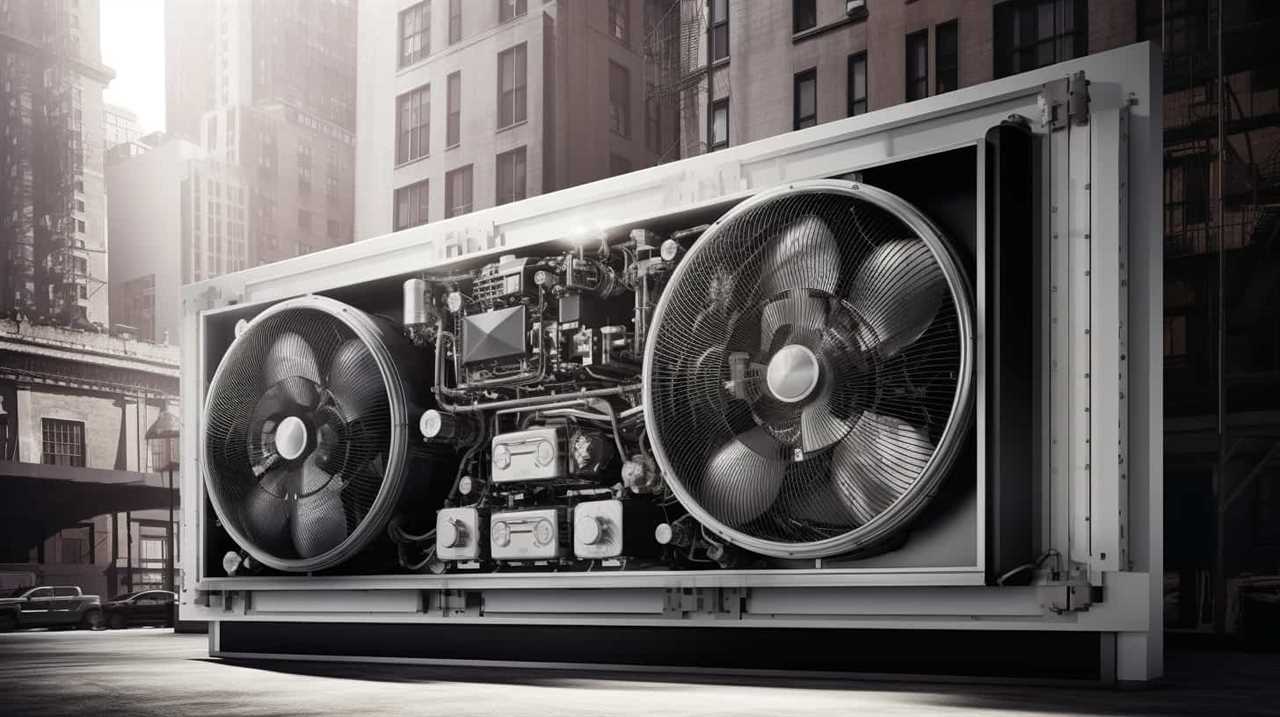
The installation process is carried out with utmost precision and expertise to ensure the long-term success of the geothermal heat pump system.
Maximizing Energy Efficiency With Geothermal Technology
We can maximize energy efficiency with geothermal technology by utilizing the Earth’s natural heat to provide consistent and sustainable heating and cooling for business structures. Geothermal systems work by extracting heat from the ground during the winter and transferring it indoors, while in the summer, they remove heat from the building and release it into the ground.
Here are three key ways geothermal technology enhances energy efficiency:
Reduced energy consumption: Geothermal systems require less electricity to operate compared to traditional heating and cooling systems, resulting in lower energy bills and reduced carbon emissions.
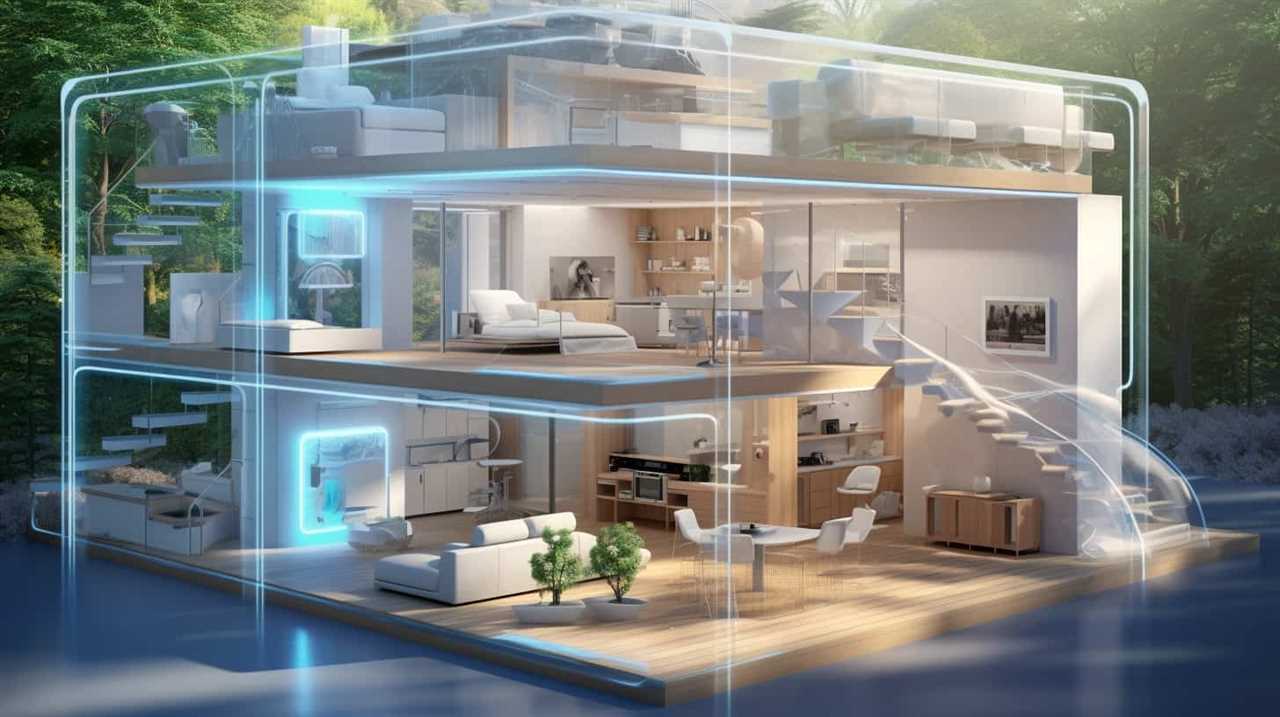
Constant temperature control: Geothermal heat pumps maintain a constant temperature throughout the year, eliminating the need for frequent adjustments and ensuring optimal comfort for occupants.
Long lifespan and low maintenance: Geothermal systems are known for their durability and longevity, requiring minimal maintenance and offering a reliable and efficient heating and cooling solution for years to come.
By implementing geothermal technology, businesses can significantly reduce their energy consumption and environmental impact while enjoying consistent and cost-effective temperature control.
In the next section, we’ll explore the importance of maintaining and troubleshooting geothermal heat pumps to ensure their optimal performance.

Maintaining and Troubleshooting Geothermal Heat Pumps
Our team will outline key strategies for maintaining and troubleshooting geothermal heat pumps to ensure their optimal performance. Proper maintenance is crucial to maximize the efficiency and lifespan of your geothermal heat pump system. Regular check-ups, filter cleaning or replacement, and inspecting the heat exchanger are essential tasks. Troubleshooting common issues such as low refrigerant levels, air leaks, or faulty thermostats can help identify and fix problems early on. Here is a table outlining some common maintenance tasks and troubleshooting tips:
| Maintenance Task | Troubleshooting Tip |
|---|---|
| Regular check-ups | Monitor system performance |
| Filter cleaning/replacement | Ensure proper airflow |
| Inspect heat exchanger | Check for leaks or corrosion |
Financial Incentives for Geothermal Energy in Commercial Buildings
To maximize the financial benefits of geothermal energy in commercial buildings, businesses can take advantage of various incentives and grants. Here are three ways that companies can tap into financial support for their geothermal projects:
Federal Investment Tax Credit (ITC): Businesses can receive a tax credit of 10% for qualifying geothermal projects. This credit can help offset the upfront costs of installation and equipment.
State and Local Incentives: Many states offer additional incentives such as grants, rebates, and low-interest loans to encourage the adoption of geothermal energy. These incentives vary by location, so businesses should research what’s available in their area.

Renewable Energy Certificates (RECs): Companies can generate revenue by selling the environmental attributes of their geothermal energy production through RECs. These certificates represent the environmental benefits of generating renewable energy and can be sold to utilities or other entities.
Case Studies: Successful Geothermal Projects for Businesses
Several businesses have successfully implemented geothermal projects to harness the Earth’s warmth for their structures. These case studies serve as examples of how geothermal energy can be effectively utilized in various industries. Below is a table showcasing three successful geothermal projects for businesses:
| Business | Location | Benefits |
|---|---|---|
| Hotel Resort | California | Reduced energy costs |
| Manufacturing | Germany | Increased energy efficiency |
| Office Building | New York | Sustainable heating and cooling |
In California, a hotel resort implemented a geothermal project, resulting in reduced energy costs. This not only improved their bottom line but also aligned with their commitment to sustainability. Similarly, a manufacturing company in Germany utilized geothermal energy to increase their energy efficiency, leading to significant savings. Lastly, an office building in New York implemented geothermal heating and cooling, ensuring a sustainable and comfortable working environment for its occupants. These case studies demonstrate the successful integration of geothermal energy into businesses, providing economic and environmental benefits.
Environmental Impact of Geothermal Technology in Commercial Structures
We have observed a significant decrease in greenhouse gas emissions, thanks to the implementation of geothermal technology in commercial structures. This environmentally friendly solution has proven to have a positive impact on our planet and offers several benefits for businesses.

Here are three key ways geothermal technology minimizes its environmental impact:
Reduced carbon footprint: Geothermal systems use the natural heat from the earth, eliminating the need for fossil fuel-based heating and cooling. This leads to a substantial reduction in carbon dioxide emissions, a major contributor to climate change.
Energy efficiency: Geothermal systems are highly efficient, utilizing a small amount of electricity to harness the earth’s heat. This efficiency helps to conserve energy resources and further reduces the overall environmental impact.
Preservation of natural resources: By reducing reliance on traditional heating and cooling methods, geothermal technology helps preserve valuable natural resources, such as oil and gas. This contributes to the long-term sustainability of our planet.

Overcoming Common Challenges in Geothermal System Implementation
When it comes to implementing geothermal systems, we’ve found cost-effective solutions to be a key challenge. However, through careful planning and strategic design, we’ve been able to maximize energy efficiency and minimize expenses.
Additionally, addressing technical limitations, such as system sizing and ground heat transfer, has been crucial in ensuring successful geothermal system implementation.
Cost-Effective Solutions for Geothermal
The implementation of cost-effective solutions for geothermal systems presents businesses with the opportunity to overcome common challenges and harness the Earth’s warmth efficiently. Here are three key strategies that can help businesses achieve this goal:
Optimize system design: By carefully designing the geothermal system to match the specific needs of the building, businesses can maximize efficiency and reduce costs. This involves considering factors such as the size and layout of the structure, as well as the local climate and geological conditions.
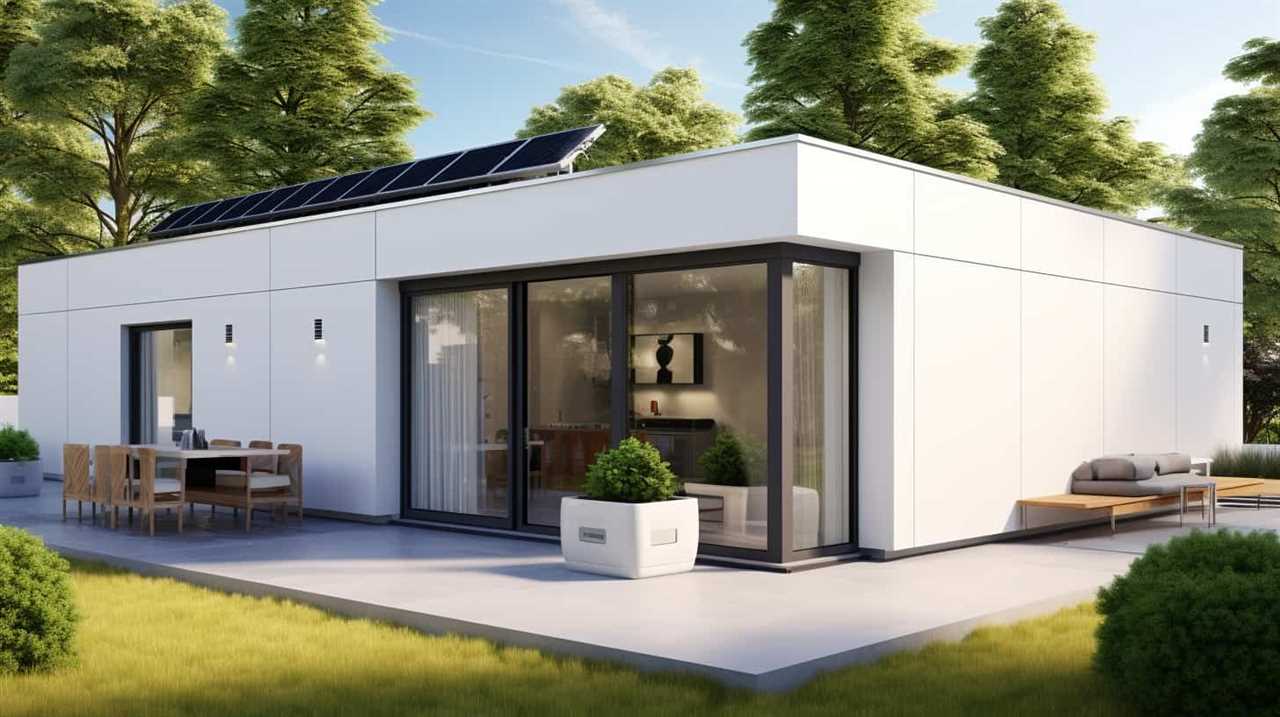
Conduct thorough feasibility studies: Before implementing a geothermal system, it’s essential to conduct a comprehensive feasibility study. This involves assessing the site’s geothermal potential, evaluating the costs and benefits, and analyzing the long-term viability of the project. By conducting thorough research, businesses can ensure that their investment in geothermal technology will be cost-effective and sustainable.
Explore financing options: Implementing a geothermal system can require a significant upfront investment. However, businesses can explore various financing options, such as government incentives, grants, or loans, to make the transition more affordable. By taking advantage of these financial resources, businesses can overcome cost barriers and make geothermal systems more accessible.
Maximizing Energy Efficiency
To effectively maximize energy efficiency in geothermal system implementation, we must carefully address common challenges and utilize cost-effective strategies. By doing so, businesses can harness the full potential of geothermal energy and reduce their environmental impact.
One common challenge in geothermal system implementation is the initial investment cost. However, the long-term benefits, such as lower energy bills and reduced maintenance costs, outweigh the initial expenses.

Another challenge is the lack of technical expertise. Collaborating with experienced geothermal contractors and conducting thorough research can help overcome this hurdle. Additionally, proper system design, including the use of efficient heat pumps and well-insulated pipes, can significantly improve energy efficiency.
By addressing these challenges and implementing cost-effective strategies, businesses can unlock the full potential of geothermal energy and create a sustainable future.
In the next section, we’ll discuss how to overcome technical limitations in geothermal system implementation.
Addressing Technical Limitations
We can overcome common challenges in geothermal system implementation by utilizing innovative solutions and collaborating with experienced professionals. When addressing technical limitations, here are three key strategies to consider:

Conduct a thorough site assessment: By evaluating soil conditions, hydrogeology, and the availability of suitable drilling sites, we can determine the feasibility of geothermal system installation. This assessment helps identify potential obstacles and design solutions tailored to the specific site.
Optimize system design and sizing: Properly sizing the geothermal heat pump system and optimizing the distribution system ensures efficient operation and maximizes energy savings. By working closely with experts, we can design a system that meets the unique needs of the business structure.
Implement effective maintenance and monitoring practices: Regular maintenance and monitoring of the geothermal system help identify and address any issues promptly. By establishing a proactive maintenance plan, we can ensure the long-term performance and reliability of the system.
By implementing these strategies, businesses can overcome technical limitations and harness the full potential of geothermal systems.

Now, let’s explore future trends and innovations in geothermal heat pump technology for businesses.
Future Trends and Innovations in Geothermal Heat Pump Technology for Businesses
What are the future trends and innovations in geothermal heat pump technology for businesses?
As we look ahead, there are exciting developments on the horizon that promise to revolutionize the way businesses harness the Earth’s warmth.
One such trend is the integration of smart technology into geothermal heat pump systems. Imagine being able to control and monitor your heat pump remotely, adjusting settings and optimizing energy usage with just a few taps on your smartphone. This level of convenience and efficiency won’t only enhance the user experience but also lead to significant cost savings for businesses.
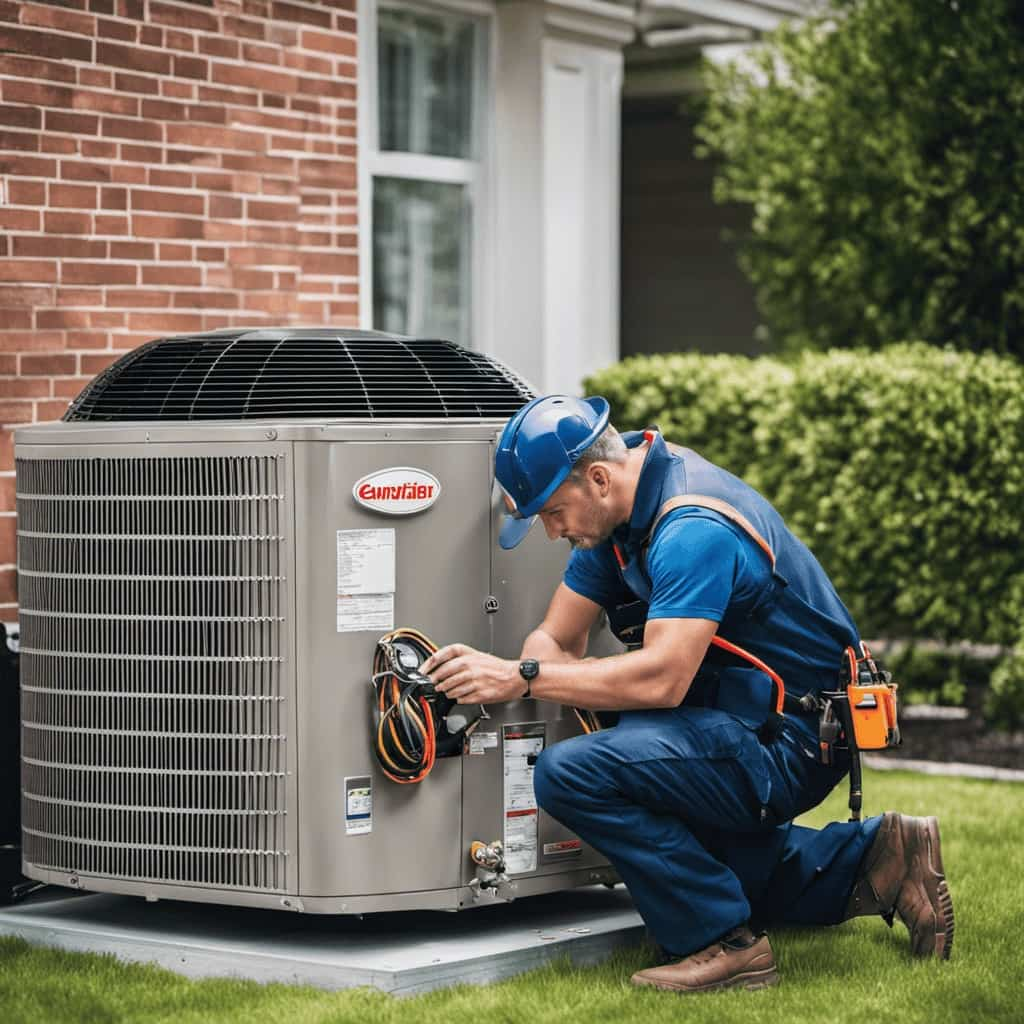
Additionally, advancements in drilling techniques and materials are making it possible to tap into geothermal resources in previously inaccessible areas, expanding the potential for geothermal heat pump installations.
With these innovations, the future of geothermal heat pump technology for businesses is looking brighter than ever.
Frequently Asked Questions
Is Geothermal Energy Only Suitable for Residential Structures, or Can It Also Be Harnessed for Commercial Buildings?
Geothermal energy is not only suitable for residential structures, but it can also be harnessed for commercial buildings. It provides a sustainable and cost-effective alternative to traditional heating and cooling systems, reducing carbon emissions and saving money in the long run.
What Are Some Potential Challenges That Businesses May Face When Implementing a Geothermal Heat Pump System?
Implementing a geothermal heat pump system in business structures can present challenges. These may include high upfront costs, site suitability assessments, and potential disruption during installation. However, the long-term energy savings make it a worthwhile investment.

Are There Any Financial Incentives Available for Businesses That Choose to Harness Geothermal Energy?
Yes, there are financial incentives available for businesses that choose to harness geothermal energy. These incentives can include tax credits, grants, and low-interest loans, making it a cost-effective option for sustainable heating and cooling solutions.
Can Geothermal Technology Be Integrated With Existing Heating and Cooling Systems in Commercial Buildings?
Yes, geothermal technology can be seamlessly integrated with existing heating and cooling systems in commercial buildings. For example, we recently upgraded our office building and combined geothermal with our HVAC system, resulting in significant energy savings and improved comfort for our employees.
What Are Some Future Trends and Innovations in Geothermal Heat Pump Technology That Businesses Should Be Aware Of?
Some future trends and innovations in geothermal heat pump technology that we should be aware of include advancements in efficiency, smart controls for optimal energy management, and the integration of geothermal systems with renewable energy sources.
What are the Benefits of Using Heat Pump Innovations in Commercial Buildings?
Heat pump innovations in commercial buildings bring numerous benefits. Firstly, they provide efficient heating and cooling solutions, resulting in energy savings and reduced operational costs. Secondly, these innovations improve indoor air quality, creating a comfortable environment for employees and customers. Additionally, heat pump innovations contribute to sustainability efforts by reducing carbon emissions. With advanced technology, commercial buildings can leverage the advantages of heat pump innovations for enhanced climate control and economic benefits.
Conclusion
In conclusion, by harnessing the earth’s warmth through geothermal heat pump technology, businesses can benefit from cost savings, environmental sustainability, and long-term energy efficiency.

Through successful case studies and innovative advancements, geothermal systems have proven to be a reliable and effective solution for commercial structures.
As we continue to explore future trends in this field, it’s clear that geothermal heat pump technology holds immense potential for businesses seeking a greener and more sustainable future.






